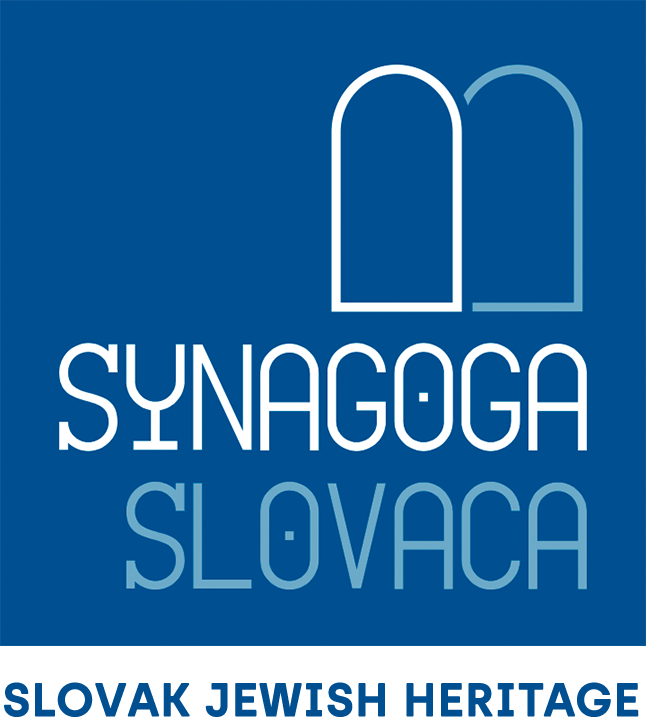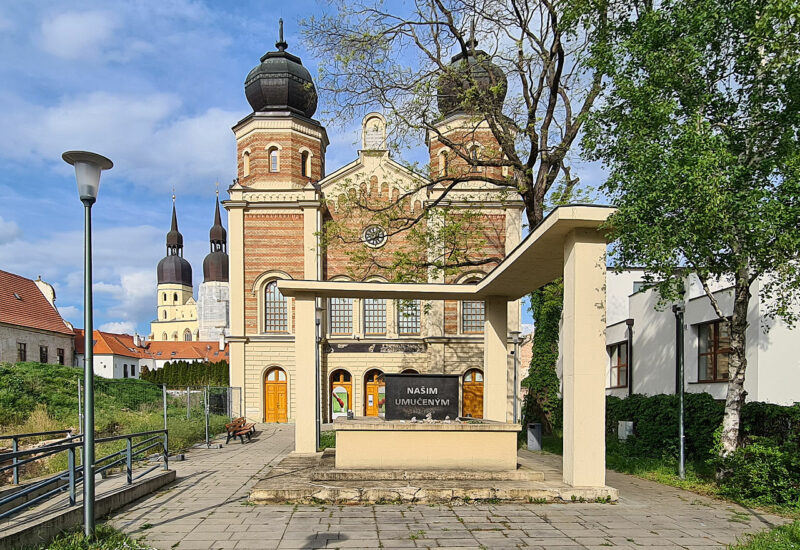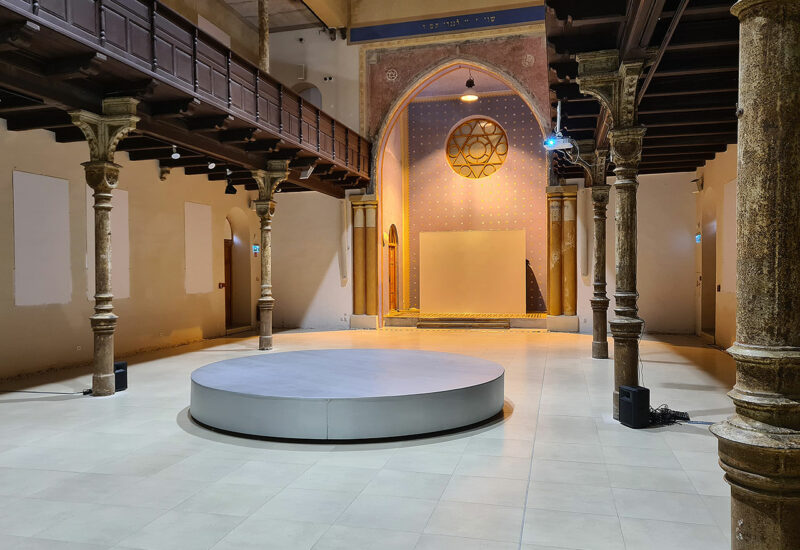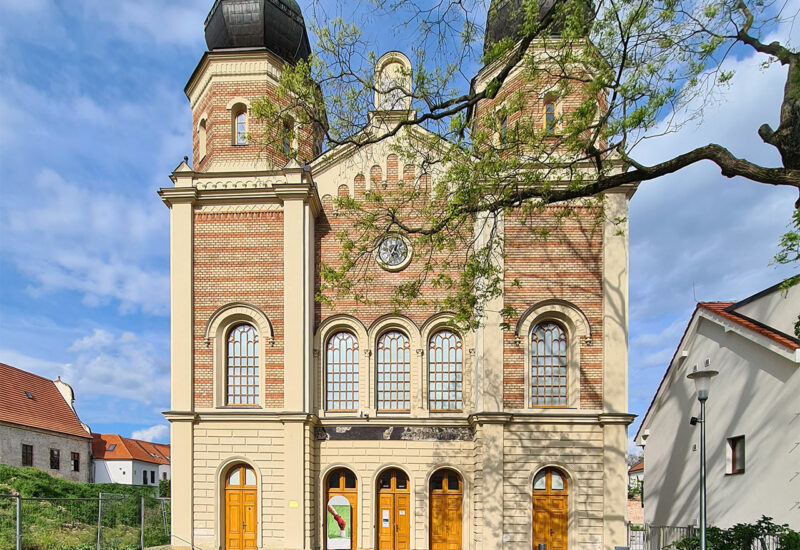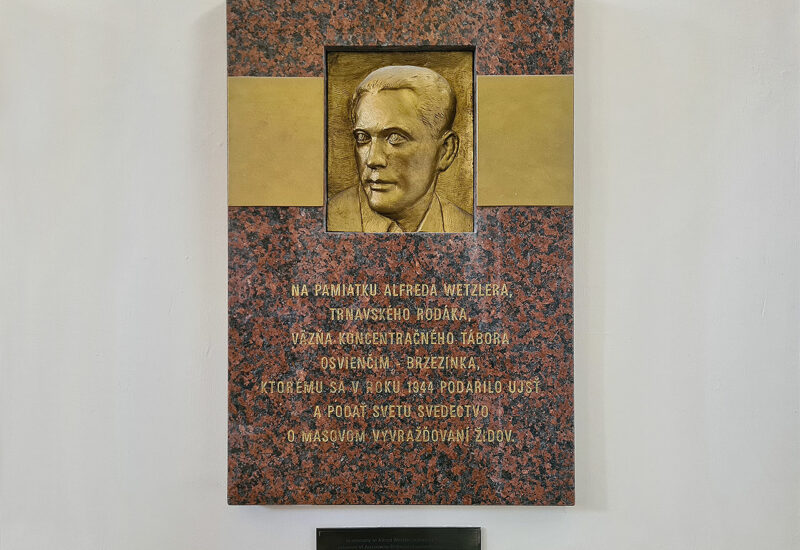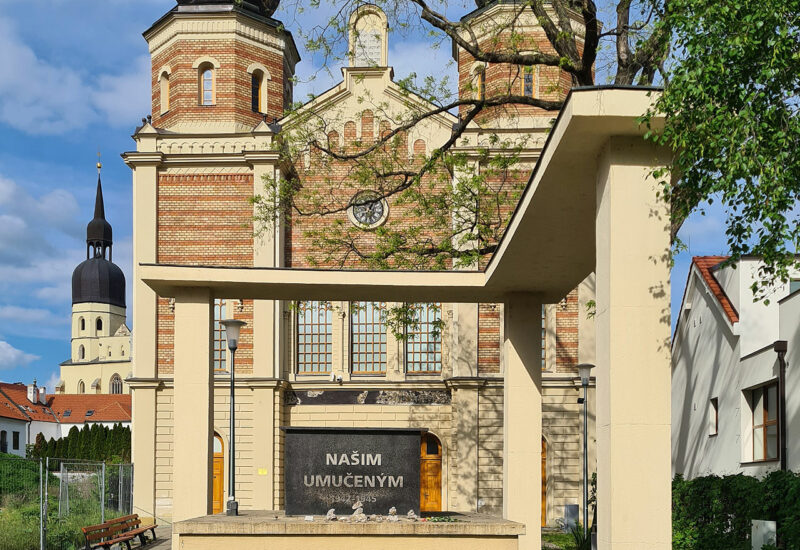Trnava, Status Quo Ante synagogue
This synagogue, built in 1897 for the Status Quo Ante Jewish community, was designed by Jakob Gartner (1861-1921), a prolific Vienna-based architect who specialized in Jewish houses of worship. Located in the center of town, the red-brick neo-Romanesque building has a twin-towered façade that faces the street. The three-nave sanctuary has a women’s gallery supported by cast-iron columns. The synagogue was restored by its owner – the Trnava Self-Governing Region – in 2015-2016. The building has been used since 1994 as the Center for Contemporary Art of the Ján Koniarek Gallery in Trnava. A Holocaust memorial designed by the architect Arthur Szalatnai-Slatinský (1891-1961) stands in front of the entrance. The smaller Orthodox synagogue stands across the street and is used as a café.
Trnava was an important center of Jewish life in the Middle Ages, home to Rabbi Isaac Tyrnau, a leading Jewish scholar in the region. In the wake of a blood libel in 1539, the Jews were expelled from Trnava and for centuries could not even transit the city. Only in 1717, thanks to Simon Michael, a negotiator for the Jewish community in Bratislava, was an agreement reached with the municipality of Trnava that allowed Jews to pass through the city for a fixed transit fee. Trnava reopened for Jewish settlement in the second half of the nineteenth century and by 1930 had 2,728 Jewish residents. There were two organized Jewish communities, Orthodox and Status Quo Ante. Most of Trnava’s Jews were killed in the Holocaust, and there is no active Jewish community here today.
Address
Halenárska 2
Trnava
Coordinates
48°22’40.9″N
17°35’24.0″E
